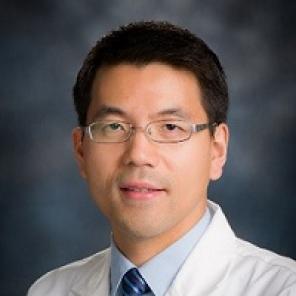
Chun-Teh Lee is Associate Professor in the Department of Periodontics and Dental Hygiene at the University of Texas Health Science Center at Houston School of Dentistry. Lee’s research focuses on understanding resolution of inflammation mediated by specialized pro-resolving mediators (SPMs) in periodontitis. His work demonstrated that control of inflammation biochemically by SPM has a direct impact on the composition of the subgingival microbiota, gene expression pattern in gingival tissue and reverses periodontal disease progression in the preclinical model. Recently, Lee is investigating correlations between profiles of SPMs, SPM pathway markers, SPM corresponding receptor gene expression in gingiva and subgingival microbiome in periodontal inflammation and the impact of SPMs on cell activities. Lee is also active in clinical studies in periodontology, implantology and evidence-based dentistry.
1. How did you first learn about the AADR and what motivated you to join?
Since I studied in dental school, I knew AADR and IADR are the largest dental research associations in the world. I became the member of AADR/IADR to present the abstract of my research project in 2014 when I was the graduate student in Harvard University.
2. Can you describe your research? How do you hope your work will impact others?
My early work primarily focused on analyzing subgingival microbiota and host responses in the rat ligature induced periodontitis model following the application of specialized pro-resolving mediators (SPMs). SPMs are able to evoke anti-inflammatory and pro-resolving mechanisms, enhance microbial clearance and stimulate tissue remodeling. My project demonstrated that control of inflammation biochemically has a direct impact on the composition of the subgingival microbiota, gene expression pattern in gingival tissue and reverses disease progression. These findings emphasized the concept that control of inflammation is the primary target of periodontal therapy. Recently, I am investigating the relationship between profiles of SPMs, SPM pathway markers, SPM corresponding receptor gene expression in gingiva and subgingival microbiome in patients with or without periodontitis. This project can help us understand the role of resolution of inflammation in periodontitis and advance the use of SPMs in treating periodontitis. I am also involved in clinical trials relevant to periodontology as well as implantology and evidence-based dentistry. I hope my research work can eventually advance the diagnosis and treatment for periodontitis and resolve clinical issues faced by many clinicians and patients.
3. Can you describe your experience being a researcher from an underrepresented group in science?
Since I was an international student, I realized there were many differences between my home town, Taiwan, and the United States. The culture differences definitely affect my education, career and daily life. Fortunately, most people were very friendly and willing to help me in every aspect. As an immigrant and minority, it is not easy to overcome language barrier and fully express my ideas and thoughts in the beginning. However, my mentors and colleagues always listened to me and enthusiastically worked with me. There are many opportunities for all researchers regardless of gender, race and background. Of course, researchers from under-represented groups still face many challenges nowadays. Academic institutions and professional associations have to improve diversity and avoid unfairness in research.
4. Have you had the opportunity to mentor underrepresented inorities or work to increase diversity in science? If yes, can you describe your experience and what agencies/organizations you worked with?
During my career, I had mentored White American, African American, Asian American and international students in research. I think a mentor should treat everyone equally but also consider individual uniqueness. I encourage every student who is interested in research to conduct research projects and carefully evaluate whether anyone is unfairly treated or deprived of the opportunity due to race, ethnicity and gender.
I am currently a member of AADR Committee on Diversity and Inclusion. Our committee tries very hard to promote diversity in dental research and science by organizing lectures, workshops and advocating fellowship programs.
As the Secretary/Treasurer of AADR-Houston Section, my colleagues and I encourage students in our school to participate in the Summer Research Program every year. Each year we usually have 30 to 40 students with diverse backgrounds and about one fourth of them are underrepresented minorities in science.
5. Based on your experience, how would you encourage AADR members to help increase the diversity of the research workforce?
We should point out the issue of lacking diversity among researchers and academics in dentistry and oral science, and encourage students from under-represented groups to be involved in research. I am the current Secretary/Treasurer of AADR-Houston section. AADR-Houston always encourages the students to become AADR members and ensures equal opportunity for every student to be involved in research projects regardless of their race, ethnicity, gender and background.
6. What role do you think professional associations can play in supporting its members who are members of underrepresented minority/ethnic groups?
I think professional associations, such as AADR, should set a goal to have member demographics reflecting national demographics. Professional associations can provide funds to support membership fees for students or young researchers from underrepresented groups. Additionally, professional associations should encourage researchers from underrepresented groups to take leadership positions and share their stories in research career. Having a role model is definitely motivating for students and members from underrepresented groups.




